French Macarons
This post may contain affiliate links. Read my full disclosure policy.
Learn to make classic French macarons with this easy recipe, complete with all the tips you need to create the most joyful cookies on the planet.
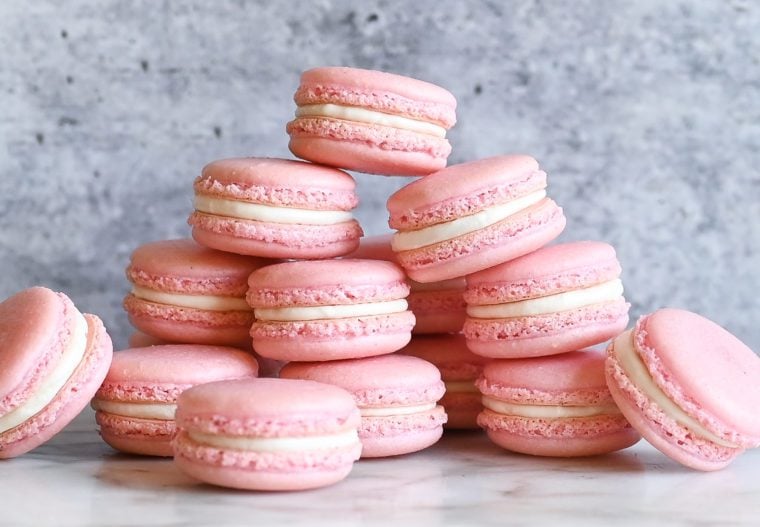
Macarons (mah-kah-rons) are whimsical Parisian-style cookies, with two delicate almond meringue shells cradling a sweet filling. The shells have a light, crisp exterior and a chewy interior, and their vibrant colors make them as pretty to look at as they are delicious to eat. The cookies are not to be confused with American macaroons (mac-uh-roons), which are coconut-based meringue cookies, or Emmanuel Macron, the 25th president of France!
Know Your Cookie: Macarons VS Macaroons
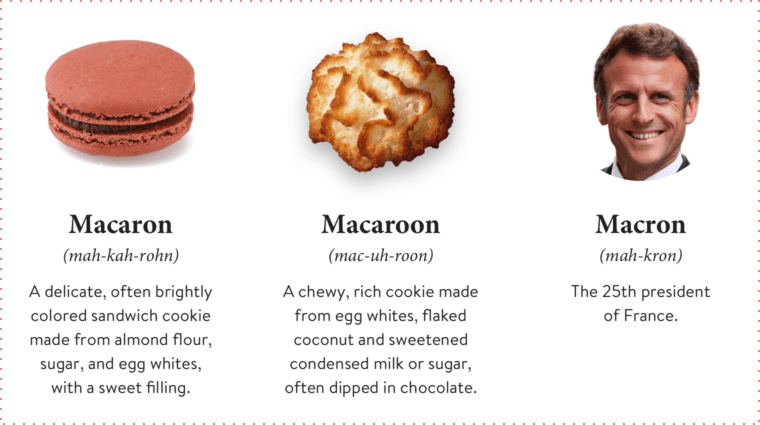
Making French Macarons
Given their temperamental nature, French macarons require precise measurements. This recipe provides metric measurements only because, to achieve success, you must weigh your ingredients using a digital scale. However, once you master the basics of making macaron shells, the creative options are endless. You can marble the color of the shells, vary the sweet fillings, roll the edges in nonpareils, or dip them in chocolate. This recipe guides you in creating classic vanilla-flavored macarons, but if you’re ready for a fun twist, be sure to check out my chocolate macarons recipe next!
The cookies are best when they’ve had a few days to “age” in the fridge, which allows the shells and filling to meld together into one cohesive cookie. Place the assembled macarons inside an airtight container, refrigerate them for 1 to 2 days, and then let them to come to room temperature before serving.
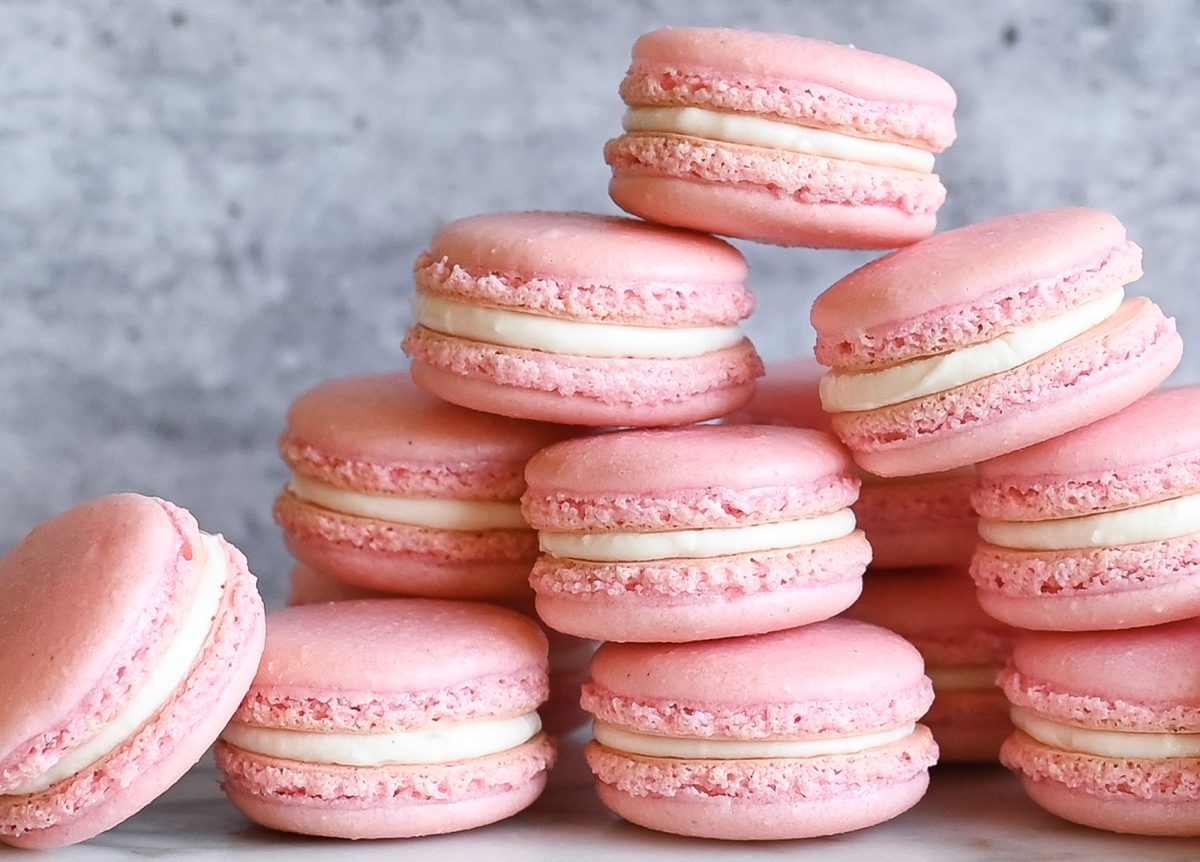
What You’ll Need To Make Macarons
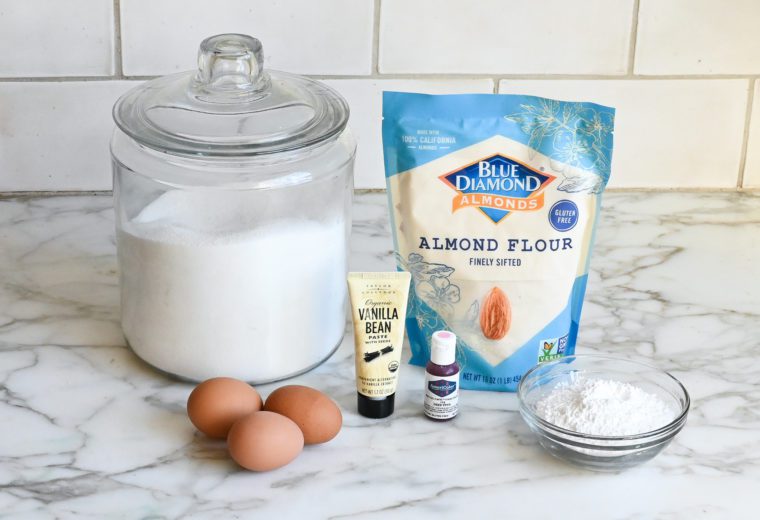
- Almond Flour: Provides the base and structure of the macaron shells, and also gives macarons their distinctive flavor and texture.
- Confectioners’ Sugar: Adds sweetness and helps in binding the almond flour to create a smooth, fine batter. It also contributes to the texture of the macaron shell.
- Egg Whites: Whipped with granulated sugar to create the meringue, which gives macarons their light and airy structure. Be sure no egg yolks get into the whites, as even a small amount will prevent them from whipping properly and achieving the necessary volume.
- Granulated Sugar: Stabilizes the whipped egg whites by helping to form a strong and stable meringue that holds its shape when piped.
- Vanilla paste: Adds flavor to the macarons. Vanilla bean paste is preferred over extract for its more intense and pure vanilla flavor and the specks of real vanilla bean; also will not add excess liquid to the batter.
- Gel food coloring: Provides vibrant, concentrated color to the macaron shells without adding excess liquid, which could affect the consistency of the batter.
- Filling of Choice: Swiss meringue buttercream, cream cheese frosting, lemon curd, or chocolate ganache fill the space between two macaron shells, adding flavor and creaminess.
- Jump to the printable recipe for precise measurements
Macaron Filling Options
You can fill macarons with anything, from cream cheese frosting and Swiss meringue buttercream to lemon curd, jam, and chocolate ganache. My favorite filling for vanilla macarons is Swiss meringue buttercream because it’s not too sweet — the macaron shells are plenty sweet on their own.
Step-by-Step Instructions
Step 1: Prep
Fill a small saucepan with about 1 inch of water. Bring to a simmer on the stove over medium-low heat. Line two 13×18-inch baking sheets with parchment paper or Silpat baking mats. Place the pastry bag fitted with the ½-inch round tip in a wide glass with the tip at the bottom of the glass but facing up (this prevents the batter from spilling out when you fill the bag). Fold the piping bag over the rim of the glass to form a cuff.
Step 2: Weigh and Sift the Almond Flour and Confectioners Sugar
Add the almond flour and confectioners sugar to a fine mesh sieve placed over a large bowl.
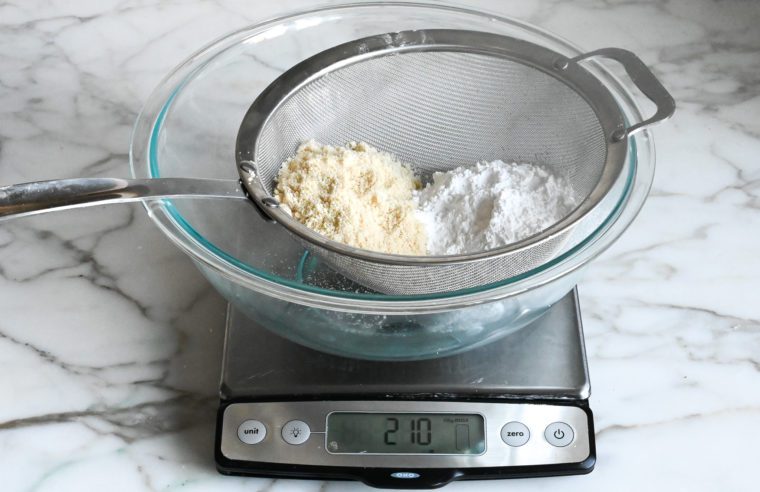
Sift the almond flour and confectioners’ sugar together through the sieve. Alternatively, if your almond flour is too coarse to go through the sieve, whisk the confectioners sugar and almond flour in a bowl, rubbing out any stubborn lumps with your fingers.
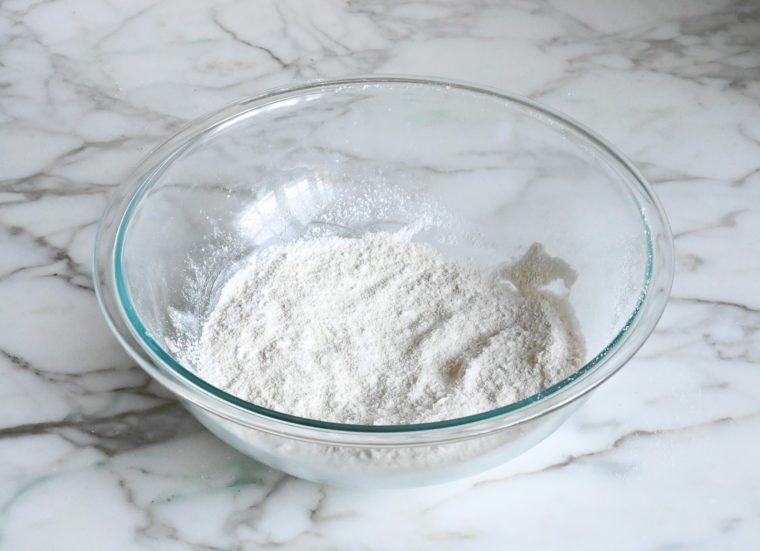
Step 3: Make the Meringue
Add the egg whites and granulated sugar to the bowl of a stand mixer.
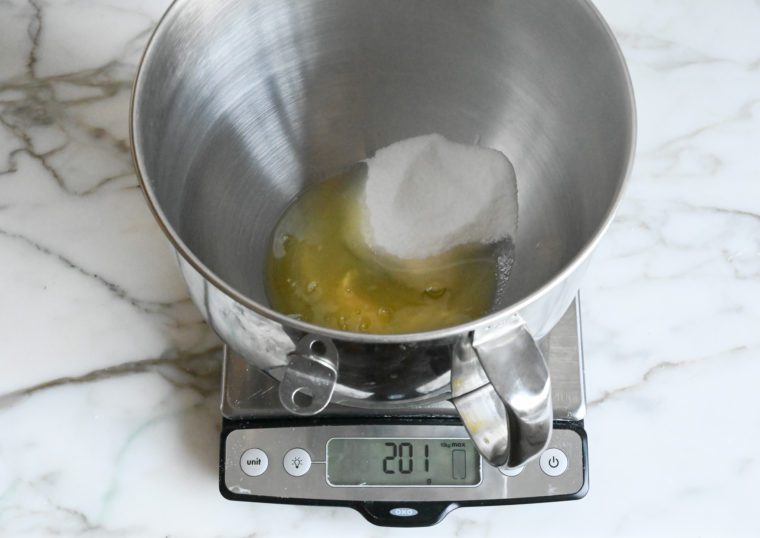
Whisk to combine. Place the bowl over the saucepan of simmering water, making sure the bottom of the bowl is not touching the water. Whisk constantly until the sugar is completely dissolved and the egg whites are very warm to the touch, about 2 minutes.
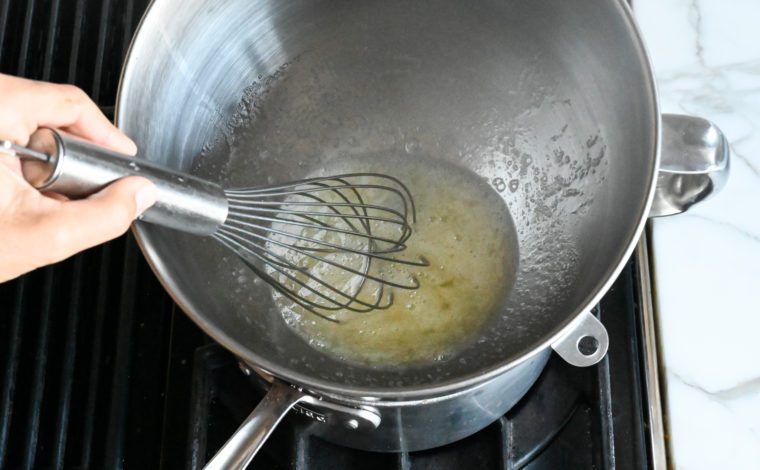
To see if it’s ready, rub the mixture between your fingers — you shouldn’t be able to feel any sugar granules.
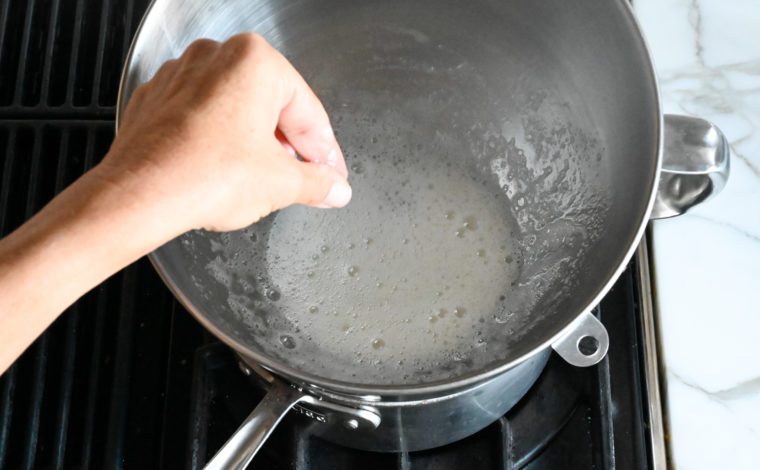
Remove the bowl from the heat and attach to the stand mixer fitted with the whisk attachment. Mix on medium-high speed (speed 8) until the meringue is glossy and holds stiff peaks. For me, this takes 6 to 8 minutes, but the time will vary depending on the wattage and size of your mixer.
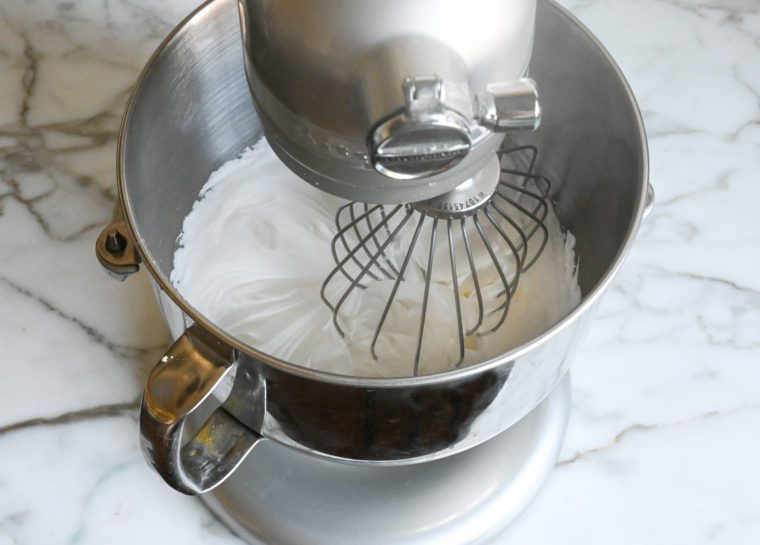
You’ll know it’s ready when you lift the whisk out of the bowl and the peaks stand straight up.
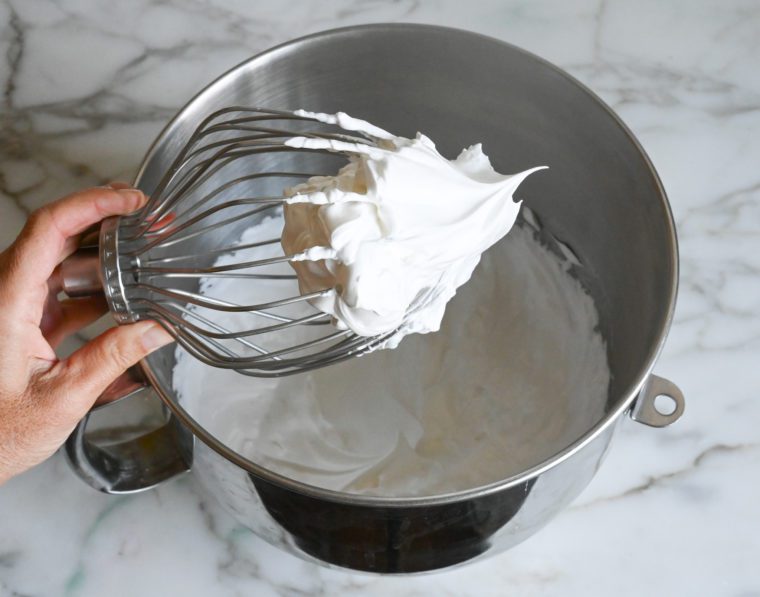
Step 4: Mix the Macaron Batter
Pour the sifted almond flour and confectioners’ sugar mixture into the bowl with the meringue. Add the vanilla bean paste and food color.
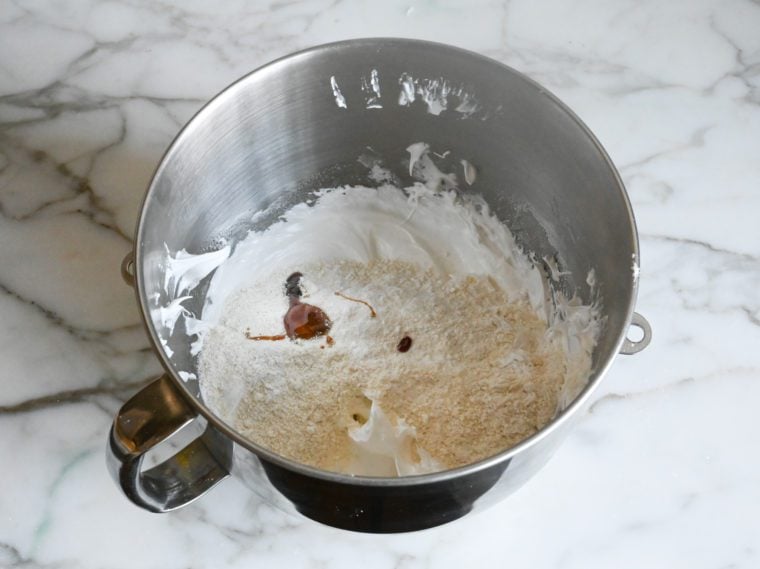
Using a rubber spatula, fold until evenly incorporated. At this point, the batter will be very thick.
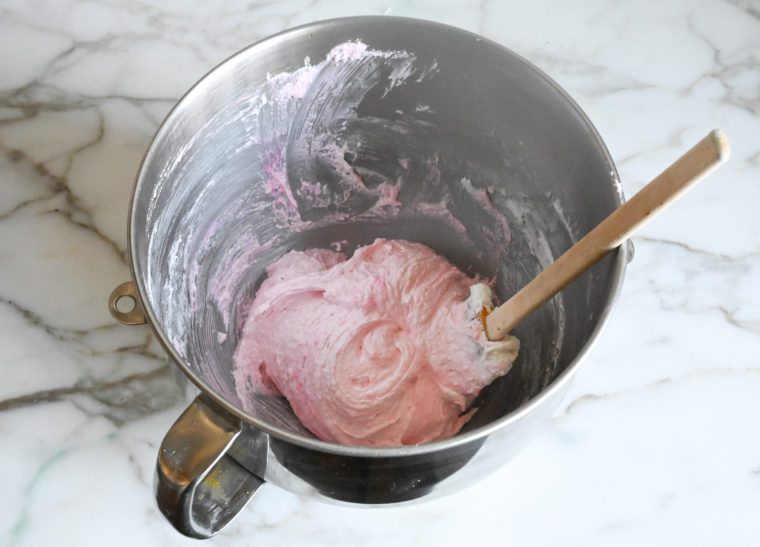
To achieve the right consistency, continue folding, occasionally smearing the batter against the bottom and sides of the bowl.
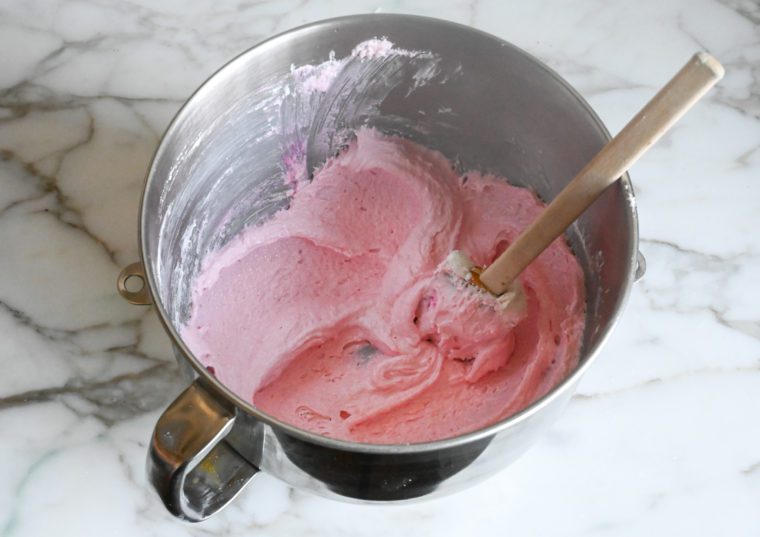
This process is called macronage. The time it takes to reach the proper consistency varies, but usually takes me 5 to 8 minutes (it’s an arm workout!). You’ll know the batter is ready when it is glossy with a lava-like consistency, and you can lift up the spatula and slowly form several figure 8s with the batter without the ribbon breaking.
Additionally, the batter from your figure 8s should dissolve into the batter that’s already in the bowl, just leaving a faint outline, in 10 to 15 seconds. Be careful not to overmix or you’ll end up with macaron puddles; it’s always best to undermix and test several times until the proper consistency has been achieved.
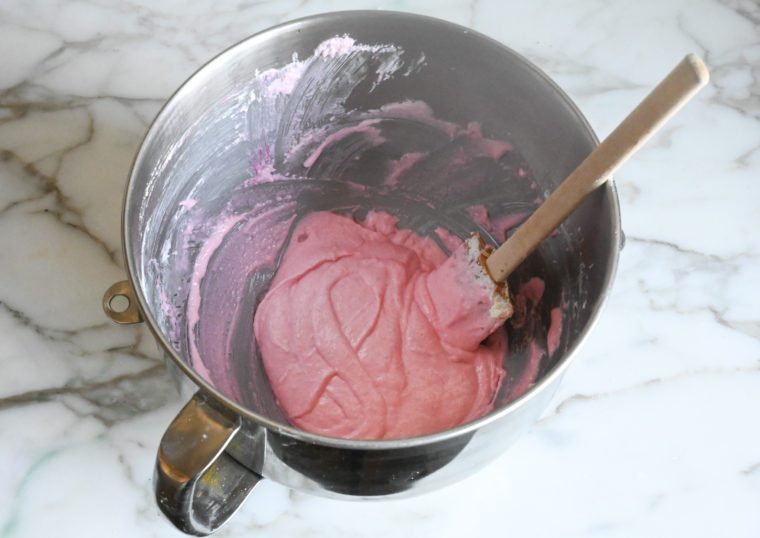
Step 5: Pipe the Batter Onto Baking Sheets, Rest & Bake
Transfer the batter to the pastry bag. Hold the bag straight up and down, perpendicular to the pan, about ½ inch above it, and pipe out 1¼-inch diameter mounds onto the parchment paper. I eyeball it, but if you prefer a template, you can use macaron silpat baking mats, which have a template to guide you. (To avoid leaving a point on the mounds, finish piping by releasing pressure and pulling up as you quickly twist with a flick of your wrist.)
Tap each tray several times on the countertop to pop any air bubbles. Use a toothpick to pop any remaining air bubbles on the surface of the shells. Allow the trays to rest for about 20 minutes, or until the shells have dried out slightly.
Meanwhile, preheat the oven temperature to 325°F and set an oven rack in the middle position.
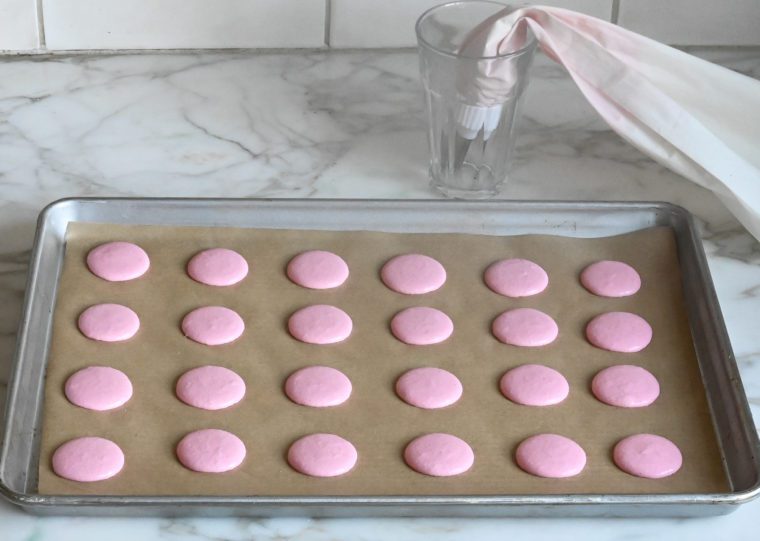
Bake one pan at a time, for 12 to 14 minutes, or until the tops are shiny and crisp. Set the pans on wire racks and let cool completely. Store the shells in a covered container in the refrigerator. (It’s fine to stack the shells; just be gentle with them.) You can also freeze the shells in a tightly sealed container for about two weeks. Make sure to thaw them in the refrigerator for a few hours before assembling.
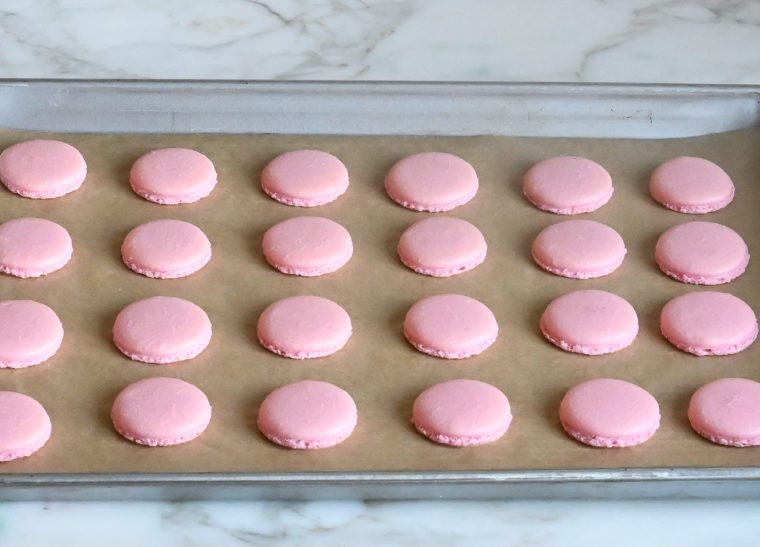
Step 6: Fill the Cookies
Prepare your filling of choice. Remove the macarons from the parchment paper, and turn half of them over. Pipe or spoon about 2 teaspoons of the filling in the center of one upside-down macaron. Top with a second macaron and press gently to spread the filling to the edges. Repeat with the remaining macarons. Store the macarons in a covered container in the refrigerator for up to 2 days; bring to room temperature before serving.

You May Also Like
French Macarons
Learn to make classic French macarons with this easy recipe, complete with all the tips you need to create the most joyful cookies on the planet.
Ingredients
- 105 grams finely sifted or super-fine almond flour
- 105 grams confectioners' sugar
- 100 grams egg whites, from approximately 3 large eggs
- 100 grams granulated sugar
- 1 teaspoon vanilla bean paste (available in the baking aisle of most supermarkets)
- 1 to 2 drops gel paste food color
- Filling of choice, such as Swiss meringue buttercream, cream cheese frosting, or chocolate ganache
Special Equipment
- Heavy-duty stand mixer
- Digital scale
- Pastry bag with a ¼ or ½-inch tip
- Parchment paper or Silpat baking mat/template
Instructions
- Fill a small saucepan with about 1 inch of water. Bring to a simmer on the stove over medium-low heat. Line two 13x18-inch baking sheets with parchment paper or Silpat baking mats. Place a pastry bag fitted with a ¼ or ½-inch tip in a wide glass with the tip at the bottom of the glass but facing up (this prevents the batter from spilling out when you fill the bag). Fold the bag over the rim of the glass to form a cuff.
- In a large bowl, sift the almond flour and confectioners' sugar together through a fine sieve. Alternatively, if your almond flour is too coarse to go through the sieve, whisk the confectioners sugar and almond flour in a bowl, rubbing out any stubborn lumps with your fingers.
- Add the egg whites and granulated sugar to the bowl of a stand mixer; whisk to combine. Place the bowl over the saucepan of simmering water, making sure the bottom of the bowl is not touching the water. Whisk constantly until the sugar is completely dissolved and the egg whites are very warm to the touch, about 2 minutes. (To see if it's ready, rub the mixture between your fingers; you shouldn't be able to feel any sugar granules.)
- Remove the bowl from the heat and attach to the stand mixer fitted with the whisk attachment. Mix on medium-high speed (speed 8) until the meringue is glossy and holds stiff peaks. For me, this takes 6 to 8 minutes, but the time will vary depending on the wattage and size of your mixer. You'll know it's ready when you lift the whisk out of the bowl and the peaks stand straight up.
- Pour the sifted almond flour and confectioners' sugar mixture into the bowl with the meringue. Add the vanilla bean paste and food color. Using a rubber spatula, fold until evenly incorporated. At this point, the batter will be very thick. To achieve the right consistency, continue folding, occasionally smearing the batter against the bottom and sides of the bowl, until it is glossy with a lava-like consistency. This process is called "macronage." The time it takes to reach the proper consistency varies, but it usually takes me 5 to 8 minutes (it's an arm workout!). You'll know it's ready when you can lift up the spatula and slowly form several figure 8s with the batter without the ribbon breaking. Additionally, the batter from your figure 8s should dissolve into the batter that’s already in the bowl, just leaving a faint outline, in 10 to 15 seconds. Be careful not to overmix or you'll end up with macaron puddles; it's always best to undermix and test several times until the proper consistency has been achieved.
- Transfer the batter to the pastry bag. Hold the bag straight up and down, perpendicular to the pan, about ½ inch above it, and pipe out 1¼-inch diameter mounds onto the parchment paper. (To avoid leaving a point on the mounds, finish piping by releasing pressure and pulling up as you quickly twist with a flick of your wrist.) Tap each tray several times on the countertop to pop any air bubbles. Use a toothpick to pop any remaining air bubbles on the surface of the shells. Allow the trays to rest for about 20 minutes, or until the shells have dried out slightly.
- Meanwhile, preheat the oven to 325°F and set an oven rack in the middle position.
- Bake one pan at a time, for 12 to 14 minutes, or until the tops are shiny and crisp. Set the pans on wire racks and let cool completely.
- Fill the macarons: Prepare your filling of choice. Remove the macarons from the parchment paper, and turn half of them over. Pipe or spoon about 2 teaspoons of the filling in the center of one upside-down macaron. Top with a second macaron and press gently to spread the filling to the edges. Repeat with the remaining macarons. Store the macarons in a covered container in the refrigerator for up to 2 days; bring to room temperature before serving.
- Make-Ahead/Freezing Instructions: You can make the shells up to a day ahead of making the final macarons; store in a covered container in the refrigerator. (It's fine to stack the shells; just be gentle with them.) You can also freeze the shells in a tightly sealed container for up to two weeks. Make sure to thaw them in the refrigerator for a few hours before assembling.
Nutrition Information
Powered by ![]()
- Serving size: 1 macaron
- Calories: 75
- Fat: 3 g
- Carbohydrates: 12 g
- Sugar: 11 g
- Fiber: 1 g
- Protein: 2 g
- Sodium: 9 mg
- Cholesterol: 0 mg
This website is written and produced for informational purposes only. I am not a certified nutritionist and the nutritional data on this site has not been evaluated or approved by a nutritionist or the Food and Drug Administration. Nutritional information is offered as a courtesy and should not be construed as a guarantee. The data is calculated through an online nutritional calculator, Edamam.com. Although I do my best to provide accurate nutritional information, these figures should be considered estimates only. Varying factors such as product types or brands purchased, natural fluctuations in fresh produce, and the way ingredients are processed change the effective nutritional information in any given recipe. Furthermore, different online calculators provide different results depending on their own nutrition fact sources and algorithms. To obtain the most accurate nutritional information in a given recipe, you should calculate the nutritional information with the actual ingredients used in your recipe, using your preferred nutrition calculator.
Gluten-Free Adaptable Note
To the best of my knowledge, all of the ingredients used in this recipe are gluten-free or widely available in gluten-free versions. There is hidden gluten in many foods; if you're following a gluten-free diet or cooking for someone with gluten allergies, always read the labels of your ingredients to verify that they are gluten-free.

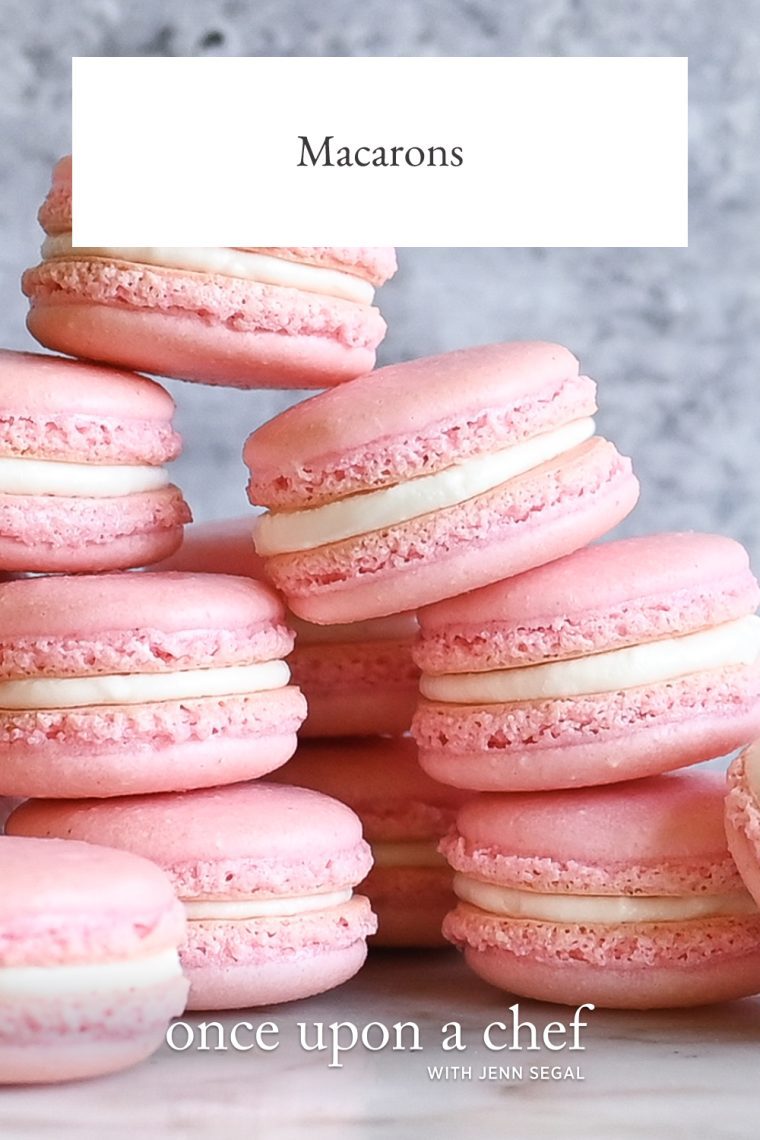
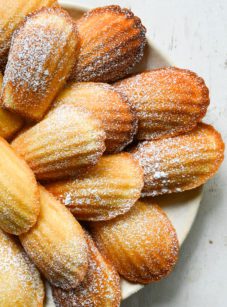
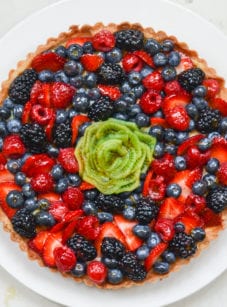
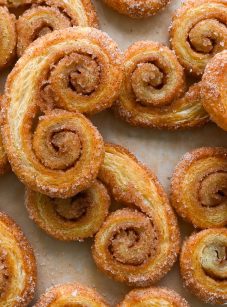
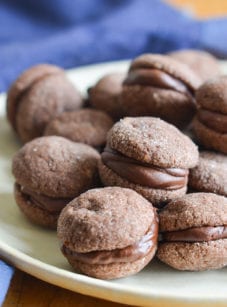
hi jen, thank you for the beautiful recipes! how much buttercream do i need to fill these macarons? how would i go about making it raspberry flavored and coffee flavored buttercream? thankyou!
Hi Amy, If you’re referring to my Swiss buttercream recipe (and I’d use that instead of American buttercream), you’ll only need a very small amount; definitely no more than a quarter of the recipe if that much. And I’m not sure how you would need to tweak the frosting recipe to make it raspberry or coffee flavored so I think your best bet is to look for recipes specifically for those.
After trying several times with another recipe and mediocre results, nailed it on Take 1 with your recipe! Appreciate having ingredients measured by weight, and it’s helpful that the egg white quantity is exactly 100g, as 3 eggs is usually a little over that for me, and it’s a snap to scale other ingredients so nothing goes to waste. I filled with espresso buttercream – so tasty!
I’ve got buttercream left over, and would love to try a chocolate version with it – do you think I could just add cocoa powder (say 20-25g) with the almond flour & sugar, and would I need to adjust other ingredients to compensate??
Hi Jennifer, So glad you enjoyed them! I actually have a chocolate version. If you’d like it, just email me at jennifer@onceuponachef.com; I’d be happy to share it with you.
Hi! After a couple attempts I finally got beautiful macarons! I was hooting and hollering and my kids thought I was celebrating something more exciting than perfect macarons! 😝 Question: if I use your Swiss meringue recipe it seems like it makes a lot more than I’d need for a batch or two of macarons, true? Should I cut it in half or thirds?
LOL…I get it – it’s a big accomplishment! Yes you’ll have a ton of frosting so I’d make a third.